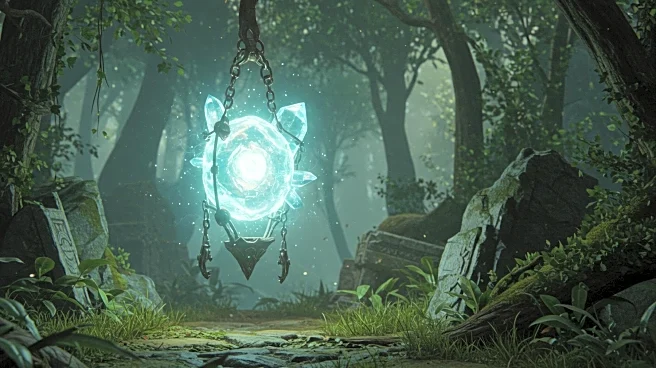What's Happening?
Deadlock, a game that has been in Alpha access, recently experienced a significant surge in player count following a major update. The game, which had seen its player numbers dwindle from nearly 200,000 at launch to around 10,000, has now rebounded to a peak of 47,000 players. This resurgence is attributed to the introduction of six new heroes, a complete overhaul of the user interface, new music, and a new map. Players are particularly engaged due to the ability to vote for the next character release, a feature that requires them to play matches to earn votes. The update has also improved the game's item system and reduced the number of lanes from four to three, enhancing the overall gaming experience.
Why It's Important?
The revival of Deadlock's player base is significant for the gaming industry as it demonstrates the impact of substantial updates on player retention and engagement. By allowing players to influence future content through gameplay, Deadlock has created a more interactive and rewarding experience. This approach could serve as a model for other games seeking to maintain or increase their player base. The increase in player count also highlights the importance of continuous development and adaptation in the gaming sector, where player interest can rapidly shift. The success of Deadlock's update may encourage other developers to invest in similar strategies to rejuvenate their games.
What's Next?
As Deadlock continues to gain momentum, the development team is likely to focus on maintaining player interest through regular updates and new content. The game's full release is still pending, but the current trajectory suggests that Valve is committed to realizing its vision for Deadlock. Future updates may include additional characters, maps, and gameplay features to sustain the current player engagement. The positive reception of the recent update could lead to increased investment in the game's development, potentially accelerating its path to full release.
Beyond the Headlines
The success of Deadlock's update may have broader implications for the gaming industry, particularly in terms of player-driven content development. By involving players in the decision-making process for new content, developers can foster a sense of community and ownership among the player base. This strategy not only enhances player satisfaction but also provides valuable insights into player preferences, which can inform future development decisions. Additionally, the game's resurgence underscores the importance of adaptability and innovation in maintaining relevance in a competitive market.











